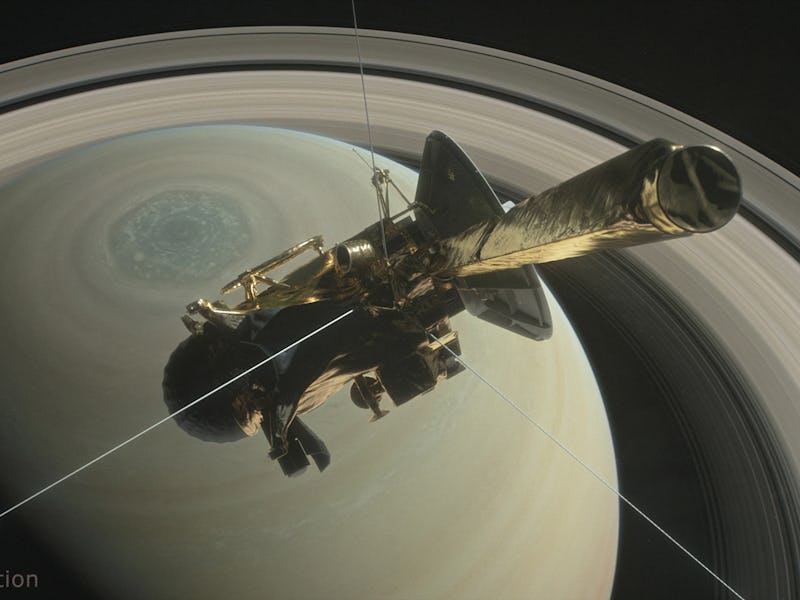As the Cassini probe enters its final mission this month, NASA is reminiscing about some of the spacecraft’s greatest achievements and thinking about what its fiery death later this year will look like as it plunges into headfirst into Saturn’s atmosphere.
Cassini has been studying the Saturnian system for 13 years on a quest to understand its complex system of more than 60 moons, the structure and material makeup of its rings, and the atmosphere of the planet itself. Cassini has had quite the journey, and bidding farewell to the craft is probably going to be one big sob fest for scientists and enthusiasts alike. But, it is running out of fuel and NASA must dispose of it properly. Before we get into the gory details, let’s take a look at some its most stellar accomplishments:
On Christmas Day 2004, Cassini launched its trusted buddy, the Huygens probe, onto Titan. The probe landed quite clumsily onto the moon, three weeks later, in January 2005. Huygens survived for about 90 minutes on the surface and delivered 350 pictures back to NASA, which revealed that the moon likely has large methane bodies of water. It was the first probe to land on another word in the Saturnian system.
Cassini provided a wealth of data related to Saturn’s moons, including Iapetus, Enceladus, Pan, Mimas, Tethys, and Daphnis.
In addition to finding methane lakes on Titan, Cassini also found icy plumes bursting from Enceladus, and discovered that Hyperion is the only satellite of a planet besides Earth’s moon that has a statically charged surface. Cassini also found evidence that the moons contribute material to the planet’s rings and play a role in the planet’s magnetosphere.
NASA is now mulling over a proposal from the New Frontiers program to send a probe to Enceladus, which is thought to have an ocean world under its icy surface which may be habitable for life.
Cassini’s grand finale will be to perform 22 weekly dives between Saturn and its rings — an intricate and dangerous mission. This final course will explore the planet’s magnetosphere and offer even more information on the rings.
On September 15, 2017, Cassini’s journey will finally come to an end. NASA’s plan is to send it straight into Saturn’s atmosphere, where it will slowly burn to death. As it descends, it will struggle to keep its antenna pointed toward Earth to deliver atmospheric data about the planet’s skies and in a matter of minutes, it will burn to a crisp and become one with Saturn.
This is one of the most successful missions in the history of space exploration, and hundreds of years from now, humans will still be learning about Cassini’s bravery. So, although it may seem cruel to plunge Cassini into the very planet it has been teaching scientists about for 13 years, it will be a very noble death.
